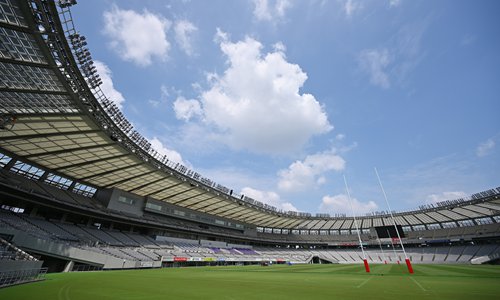HOME >> SPORTS
Hansen welcomes HIA modification after Cane confusion
Source:Reuters Published: 2019/9/22 19:13:40

A general view of the Ajinomoto Stadium in Tokyo, one of the stadiums for the 2019 Rugby World Cup Photo: IC
New Zealand's Steve Hansen has welcomed World Rugby's slight modification to timing regulations for Head Injury Assessments (HIAs), following confusion over the evaluation of flanker Sam Cane in Saturday's victory over South Africa.
Cane went for an HIA at halftime in Yokohama, and passed it, but he did not return to the field with his teammates for the second half.
Match officials determined Cane had spent too much time off the field and so could not return, despite passing the concussion test.
According to World Rugby regulations, if a player is unable to return from an HIA after 10 minutes, or directly following the 15 minute halftime break, then he must be replaced.
The All Blacks say Cane could not get back from his HIA assessment in time because of the distance he had to walk within Yokohama Stadium for the testing.
Although they stress the protocols were followed correctly on Saturday, World Rugby has now modified the rules to only start timing the HIA once the player has entered the testing room.
"Specifically for Rugby World Cup, with immediate effect, the official 10-minute HIA window will commence from the moment the temporarily replaced player enters the HIA room, rather than when the player leaves the playing area," World Rugby said in a statement on Sunday.
"This is to facilitate slightly longer distances to the HIA room from the field of play at some of the venues."
"World Rugby has also reiterated that if the time allowed for a temporary replacement elapses during halftime, the replacement shall become permanent unless the replaced player returns to the field of play immediately at the start of the second half."
Hansen welcomed the change.
"It wasn't through any fault of his that the test took longer than it should have ... it only took as long as it needed to take but it wasn't anything we could control," he said.
Posted in: MISCELLANY